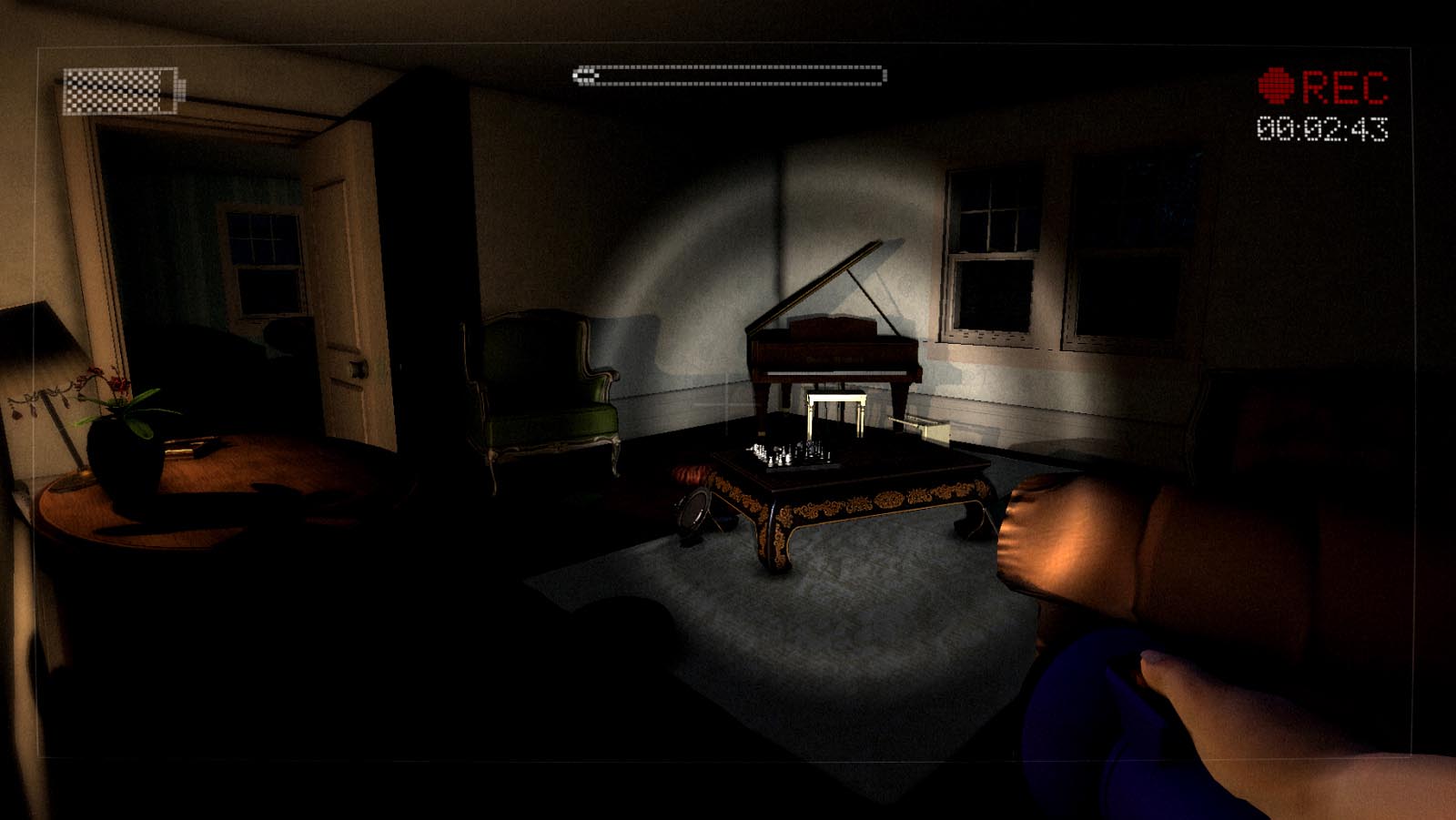Slender Man has captured a large part of the popular psyche–large enough that two girls stabbed a third girl 19 times, and other children commit acts of arson, all in his name. I can’t help but blend those headlines with subsequent forays into the Slender Man mythos. Although he is without a doubt fictitious–a legend manufactured wholecloth in full view of the internet’s many denizens–he’s transcended himself. He’s now a self-reinforcing curiosity of the modern era, reflecting the deep-seated fears of our connected culture.
For those unfamiliar with this phenomenon, Slendy, as some affectionately call him, was born on the internet forums of the 21st century. A few Photoshop projects featured a thin, suited figure without an apparent face. The first few images of him depicted children running away–and right there, we have the seeds for a great ghost story. He is the embodiment of the unknown, and he preys on the weakest among us–children. From that point on, he became a meme in the truest sense of the word, evolving and changing to suit whatever the population thought would yield the most easily shared terror.
Slender Man is now a self-reinforcing curiosity of the modern era, reflecting the deep-seated fears of our connected culture.
So how does he terrorize us now? When he approaches, he causes electronics, particularly cameras, to malfunction and glitch out. He causes his victims to go mad. He’s most aggressive when you’re trying to look straight at him. Perhaps most tellingly, he tends to stick to rural areas.
Again, all this is purely fictitious, but it’s interesting that so many of these individual threads converged into a single vision coherent enough to yield a substantive game in Slender: The Arrival. This coalescence of traits creates a compelling antagonist that preys on the modern. In our metropolitan world of smartphone cameras and nearly ubiquitous connections, a mysterious figure that resists investigation and cuts us off from our technological safety net is the ultimate terror.
Arrival benefits from these fears and pulls every psychological string. However, that’s all it can do. From a play perspective, it’s about as minimal as they come. You can pick up pages and notes strewn about the various levels; after the preface, you can pick up a simple flashlight. That lack of agency is powerful, though. From its nascent stages, it’s clear that you’re struggling to survive in the shadow of beings that sap all hope. Slender Man and his several proxies–corrupted and insane people he’s brought under his influence–are cold and uncaring. They have no clear motive other than your defilement, and they are omnipotent. Slender Man, for example, can teleport, and there’s nothing you can do to defend yourself from his tentacle-y arms but turn and run away. It’s an impressive foundation, and it fills me with dread to this day.
Slender Man and his several proxies are cold and uncaring. They have no clear motive other than your defilement, and they are omnipotent.
I’ve played Slender and its expanded pseudo-sequel Arrival before, but when I ran through it again, that prior experience didn’t help ease my fears. The world is cloaked in darkness, and all you have to push away a small sliver of that enveloping black is a small, barely functional flashlight. Against the dark, Slender Man’s blank, white visage creates an arresting contrast every time he appears. The system creates procedurally generated jump scares using a weighty, pervasive atmosphere of vulnerability and helplessness. The same system went on to birth the popular Five Nights at Freddy’s series.
Player death in Arrival takes on a whole new meaning without the predictability of those frights. I found myself afraid of being afraid, eager to see the game end so I could at last take a breath, relieved to be safe once again.
That near-constant level of stress would doom a longer game, but Arrival clocks in at just two hours. The console versions add a few extra levels that weren’t present in the original PC release, and they pad out the tension with just a bit of calm to keep players from growing exhausted. On the flip side, the added sections dilute Arrival’s already-tight focus. In its original incarnation, Arrival was an agonizing, frantic mystery. You stepped into the body of Lauren, a woman desperate to find any clues regarding the disappearance of her friend Kate. As you poked about Kate’s house, you could gathered snippets of information suggesting that her mother had passed away and that her family had been facing financial trouble–leaving the possibility open for suicide. The more you learned, though, the grimmer the reality became.
The added sections dilute Arrival’s already-tight focus.
A few side characters were present that were hinted to be the Slender Man. Because just moving around in any given level could prompt the appearance of the Slender Man, you always felt that the answers were out there, but you could never quite piece it all together. With the new areas, some of that mystery is gone, and Slender Man is established as some otherworldly being. That spoils a bit of the fun and raises plenty of questions about why Slender now attacks people, where he was before, how he came to be, etc. Without a plausible in-universe explanation, he loses just a bit of his mystique.
Despite that, Slender: The Arrival still got under my skin. I’m not quite as warm to it as I was before, but it’s an eerie experience that’s seeped into my real life. Now, on long car rides or when I’m in a sparsely populated area in the dead of night, I’ll catch glints of light and my heart will stutter at the thought that Slender Man could be at the edge of my periphery. All I can do is turn away and keep walking.
Powered by WPeMatico





